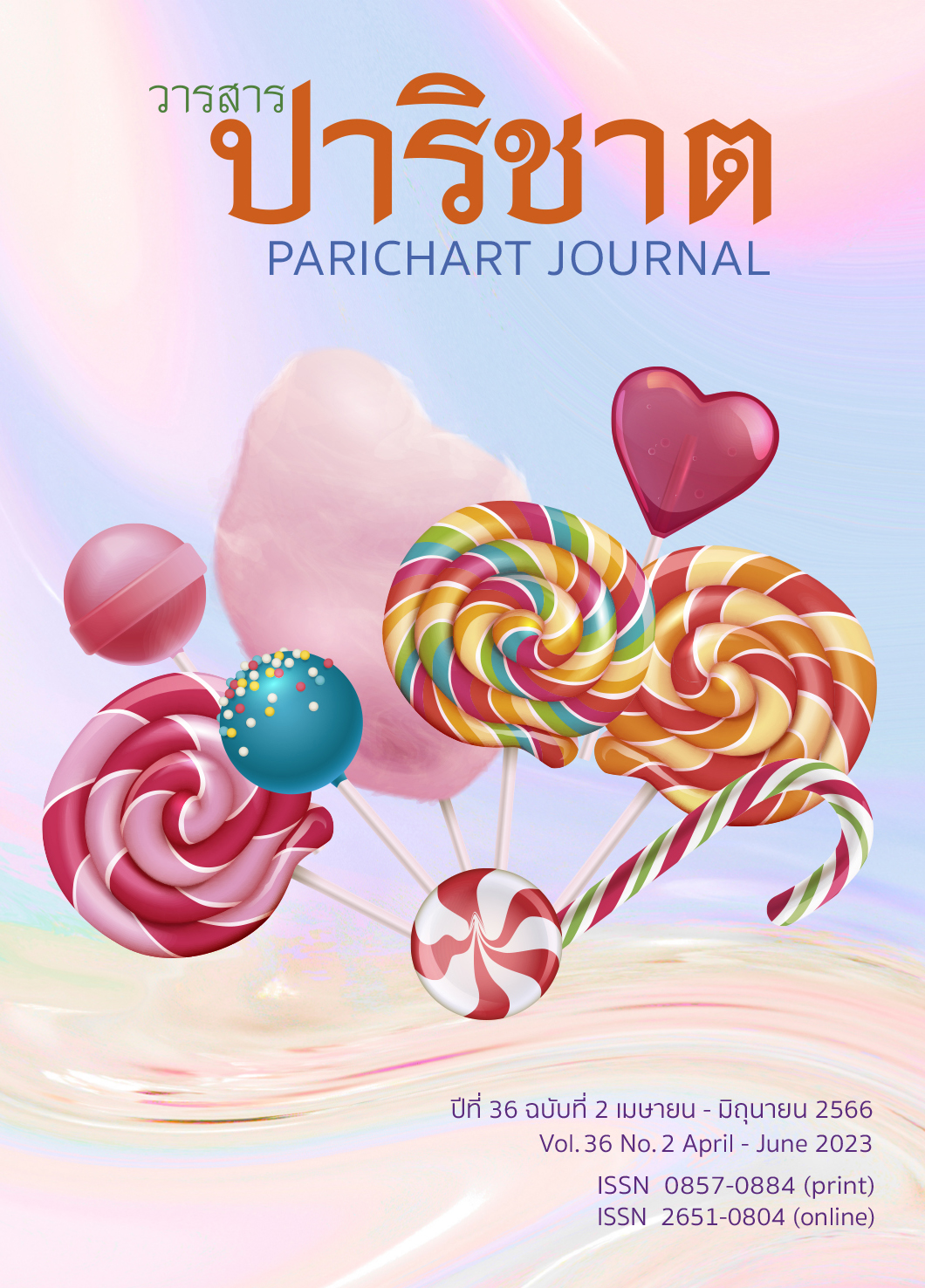Risk Factors and Travel Intentions of Foreign Tourists to Visit Thailand After the Covid-19 Pandemic
Main Article Content
Abstract
This research aimed to 1) categorize foreign tourists visiting Thailand into groups based on their lifestyles and pull factors of tourist attractions and 2) examine risk factors and travel intentions of tourists to visit Thailand after the COVID-19 Pandemic. The findings concluded that the foreign tourists visiting Thailand could be classified into four groups: 1) nature and budget-oriented travelers 2) luxury travelers 3) cultural immersers, and 4) idealized experience seekers. Concerning the risk factors and the travel intentions of tourists to visit Thailand after the COVID-19 Pandemic, it can be concluded that their intentions depended upon travel risk perceptions, opinions on travel risks, degrees of travel risk tolerance, and risk reduction strategies which were considered to be a moderator variable. Also, each group of foreign tourists was found to have its own identity.
Article Details

This work is licensed under a Creative Commons Attribution-NonCommercial-NoDerivatives 4.0 International License.
References
Rowell, R. J., & Hambleton, R. K. (1977). On the use of content specialists in the assessment of criterion-referenced test item validity. Dutch Journal for Educational Research, 2, 1-37.
Magnano, P., Boerchi, D., Lodi, E., & Patrizi, P. (2021). Validation and psychometric properties of the Portuguese version of the Coronavirus Anxiety Scale (CAS) and fear of COVID-19 scale (FCV-19S) and associations with travel, tourism, and hospitality. International Journal of Environmental Research and Public Health, 18(2), 427.
TNN Online. (2021, October 15). The Announcement of 46 Countries Exemption for Confinement: Lift the lockdown. https://www.tnnthailand.com/news/covid19/94395/ (In Thai)
Zheng, D., Luo, Q., & Ritchie, B. W. (2021). Afraid to travel after COVID-19? Self-protection, coping, and resilience against pandemic 'travel fear'. Journal of Tourism Management, 83, 104261.
Loureiro, S. M. C. (2014). The role of the rural tourism experience in place attachment and behavioral intentions. International Journal of Hospitality Management, 40, 1-9.
Plog, S. C. (1987). Understanding psychographics in tourism research: Travel, tourism, and hospitality research: A handbook for managers and researchers. USA: John Wiley and Sons, INC.
Therapy, D. (2003). Consumer Behavior. Roongruengsarn (In Thai)
Peterson, & Wilson, (1983). Peterson, R.A. and Wilson, W.R. (1992) Measuring Customer Satisfaction: Fact and Artefact. Journal of the Academy of Marketing Science, 20, 61-71. https://doi.org/10.1007/BF02723476
Stone R. N., & Grønhaug K. (1993). Perceived risk: Further considerations for the marketing discipline. European Journal of Marketing, 3(27). 39-50.
Luo, Xin, M., Wang, S., Ma, L., Tao, F., Zhang, J., Zhao, J., Li, L., Hu, D., Zhang, G., Gu, J., Lin, D., Wang, H., Cai, Y., Wang, Z., You, H., Lau, J. T.-f. (2020). Negative cognitive and psychological correlates of mandatory quarantine during the initial COVID-19 outbreak in China. American Psychologist, 75(5), 607–617. https://doi.org/10.1037/amp0000692
Chansawat, N. (1978). Risk Management. Soodpaisarn (In Thai)
Billingsley, P. (1995). Probability and measure (3rd ed.). Wiley.
The Civil Aviation Authority of Thailand (2021, December 1). Statistical Report for Air Transportation, 3rd Quarter (2020). www.caat.or.th (In Thai)
Piriyakul, M. (2019, April 19). Using smart PLS for research with structural equation models. In Thailand Research Expo, 2019 [Symposium]. Bangkok, Thailand. (In Thai)
Tirakanun, S. (2007). Research methodology for social sciences: Practices. Chulalongkorn University Printing House. (In Thai)
Cronbach, L.J. (2003). Essentials of psychology testing. Hanpercollishes.
Wanichbuncha, K. (2021). Advanced statistical analysis SPSS for Windows. Chulalongkorn Printing House. (In Thai)
Hair, J. F., Anderson, R. E., Tatham, R. L., & Black, W. C. (2010). Multivariate data analysis (7th ed.). Prentice Hall.
Kline, P. (1994). An easy guide to factor analysis. Routledge.
Hatcher, Larry. (1994). A step-by-step approach to using the SAS system for factor analysis and structural equation modeling. SAS Institute.
Saris. W. E., & Strenkhorst. L H. (1984). Causal modeling non-experimental research: An Introduction to the Lisrel approach. Dissertation Abstract International, 47(7), 282.
Cochran, W. G. (1977). Sampling techniques (3rd ed.). John Wiley & Sons.
Luo, J. M., & Lam, C. F. (2020). Travel anxiety, risk attitude and travel intentions towards “travel bubble” destinations in Hong Kong: Effect of the fear Covid-19. International Journal of environmental research and public health, 17(21), 7859. https://doi.org/10.3390/ijerph17217859
Cook, R.A., Yale, L.J., & Marqua, J.J. (2010). Tourism: The business of travel (4th ed). Pearson Education.
Beard, J.G., & Ragheb, M.G. (1983). Measuring leisure motivation. Journal of Leisure Research, 15, 219-228.
Suwitchayaphan, N. (2002) Media exposure, knowledge, attitude and touring intention of homestay ecotourism among the Thai tourists. Thesis, [Unpublished master’s thesis] Master of Arts in Development Communication, Department of Public Relations, Faculty of Communication Arts, Chulalongkorn University. (In Thai)
Deng, R. and Ritchie, B.W (2018). International university students travel risk perceptions: An exploratory study. Current Issues in Tourism, 21(4), 455-476.
Sakolart, P. (2020). Risk Management. Training Manual, Academic Center for Road Safety Policy Foundation. (In Thai)


